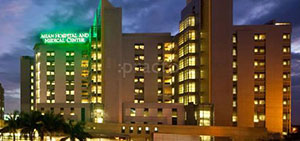A DOCTOR’S POINT OF VIEW: CAN ABORTION HARM YOU?
Rebecca B. Singson, MD, FPOGS
In a Catholic country such as the Philippines where abortion is illegal, it is disgraceful to know that our abortion rates are even higher than in countries where abortion is freely and legally available. In the U.S.A, the reported abortion rate is 16 abortions/1000 women whereas in our country, the rate is a whopping is 20-30/1000 women. Some 400,000 abortions occur in our country every year. There is no question that backdoor abortions occur frequently such that 80,000 women per year are estimated to be treated in hospitals in the Philippines for complications of induced abortion.
HOW ITS DONE
Since the procedure is illegal in this country, you would think it would be very rare to find a doctor performing the procedure. However, a recent survey of health professionals in the Philippines suggests that about one-third of women seeking an abortion obtain it from a doctor or nurse which has reduced the proportion of complications requiring hospitalization in the last two decades. However, the majority of women still consult traditional practitioners or attempt through the use of prostaglandin medications to induce the abortion themselves. Based on the health professionals survey done in 1996, it is believed that untrained abortion practitioners in our country have increased their use of hormones and modern drugs aside from using traditional methods, such as abdominal massage.1 Usually midwives or hilots do the procedure in a house or sometimes clinic where they perform lower abdominal massage over the uterine area, prescribe some bitter herbs from quinine, or ask you to take some tablets orally or to insert some tablets vaginally to soften the cervix allow it to dilate. If that effects the bleeding, they may tell you to go to an obstetrician to complete the abortion or wait for spontaneous expulsion. If that does not work, the more dangerous procedure is to insert a rubber catheter (normally used for draining urine from the bladder) inside the uterus and keep it there for several hours to induce bleeding. It can be a painful experience since the foreign body in the uterus is intended to cause uterine contractions which feels like severe cramping or dysmenorrhea. Bleeding is always a desired result to effect expulsion of the products of conception.
THE DANGERS
Women who undergo abortion were found by research to be linked to certain behaviors such as smoking, drug abuse, eating disorders and promiscuity which all increase their risk for health problems. Teenagers comprise one-third of those who undergo abortion and are even at a much higher risk of suffering both immediate and long-term abortion-related complications.3 It was found that if the partner was present but not supportive, the miscarriage rate is more than double and the abortion rate is four times greater than if he was present and supportive. Absence or abandonment by the partner increases the abortion rate to 6 times greater.4
IMMEDIATE COMPLICATIONS:
Approximately 10% of women undergoing elective abortion will suffer immediate complications, of which approximately one-fifth (2%) are considered life threatening. The nine most common major complications which can occur at the time of an abortion are: infection, excessive bleeding, embolism, perforation of the uterus, anesthesia complications, convulsions, hemorrhage, injury to the cervix, and endotoxic shock. The most common “minor” complications include: infection, bleeding, fever, second degree burns, chronic abdominal pain, vomiting, gastro-intestinal disturbances.5
partner is present and not supportive, the miscarriage rate is more than double and the abortion rate is four times greater than if he is present and supportive. If the partner is absent the abortion rate is six times greater.” 5
HEMORRHAGE
Excessive bleeding due or after abortion may happen in the presence of cervical lacerations, uterine perforation, uterine atony or disorders in blood coagulation.
INFECTION
With the introduction of any foreign body into the uterus, the potential risk for infection increases. Post abortion, the patient may be at increased risk for infection of the uterus (endometritis), of the fallopian tubes (salpingitis) which may lead to ectopic pregnancies. Of patients who have a chlamydia infection at the time of the abortion, 23% will develop PID within 4 weeks. Studies have found that one-fourth to one-fifth of patients seeking abortion have a chlamydia infection and one-fourth of them will develop Pelvic Inflammatory Disease within 4 weeks. In the absence of Chlamydia, post-aborters will still develop PID.(11)
UTERINE PERFORATION
Between 2 and 3% of all abortion patients may suffer perforation of their uterus through the use of instruments,.The chances even increase
for those who were under general anesthesia during the abortion procedure or for those who had multiple deliveries.(5) (6) Damage to the uterus may eventually evolve into problems requiring a hysterectomy, if not reproductive or pregnancy problems.
CERVICAL DAMAGE:
During an abortion, the cervix may be forced open by an inexperienced practitioner causing cervical tears or permanent damage such as cervical incompetence leading to habitual abortion or premature delivery or labor complications.(7)
ECTOPIC PREGNANCY:
Abortion is significantly related to an increased risk of subsequent ectopic pregnancies. Ectopic pregnancies, in turn, are life threatening and may result in reduced fertility.(10)
CANCER RISK
Women with one abortion face a significant risk for cervical cancer, liver and ovarian cancer. One reason for this may be the due to the disruption of the hormonal changes which accompany a pregnancy..(4)
PLACENTA PREVIA:
Abortion increases the risk of placenta previa in later pregnancies. Abnormal development of the placenta due to uterine damage increases the risk of fetal malformation, perinatal death, and excessive bleeding during labor.(8)
Having an abortion can lead to many complications that can threaten the life of a woman and even ruin her chances of having a baby in the future. Remember that preventing a pregnancy can be much safer than trying to get rid of one.
- S. Singh, D. Wulf and H. Jones, “Induced Abortion in South Central and Southeast Asia: Results of a Survey of Health Professionals,” International Family Planning Perspectives, 23:59-67, 1997.
- Ibid.
- Wadhera, “Legal Abortion Among Teens, 1974-1978”, Canadian Medical Association Journal, 122:1386-1389,(June 1980).
- Ney, et.al., “The Effects of Pregnancy Loss on Women’s Health,” Soc. Sci. Med. 48(9):1193-1200, 1994; Badgley, Caron, & Powell, Report of the Committee on the Abortion Law, Supply and Services, Ottawa, 1997: 319-321.
- Frank, et.al., “Induced Abortion Operations and Their Early Sequelae”, Journal of the Royal College of General Practitioners (April 1985),35(73):175-180; Grimes and Cates, “Abortion: Methods and Complications”, Human Reproduction, 2nd ed., 796-813; M.A.
Freedman, “Comparison of complication rates in first trimester abortions performed by physician assistants and physicians,” Am. J. Public Health, 76(5):550- 554 (1986).





